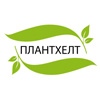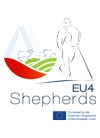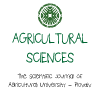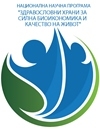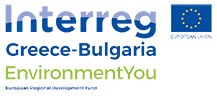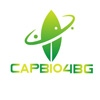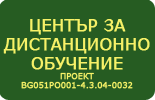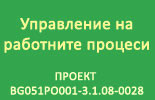Natural Disasters and Ecocatastrophes
|
Course title: |
Natural Disasters and Ecocatastrophes |
|
|
Course code: |
AFNDE |
|
|
ECTS: |
5 |
|
|
In-class hours |
Lectures: |
30 |
|
Laboratory work/Tutorials: |
30 |
|
|
Self-preparation hours |
Practical training: |
- |
|
Other: |
65 |
|
|
Total hours: |
125 |
|
|
Language: |
English |
|
|
Study cycle: |
BSc, MSc, PhD |
|
|
Semester: |
Winter & Summer |
|
|
Faculty: |
Faculty of Agronomy |
|
|
Name of the lecturer(s): |
Assoc. Prof. Kalinka Kouzmova, PhD |
|
|
Mode of delivery: |
Face-to-face, distance learning, a combination of both |
|
|
Prerequisites: |
Basic knowledge of geography and computer science |
|
|
Learning outcomes of the course unit: |
The curriculum is suitable for BSc, MSc and PhD students in English or Russian language. Recent years have witnessed a very large concern among the scientific community on issues related to the environment. Extremes of climate and climate anomalies losses are estimated at tens of thousands of lives and millions of dollars. Weather conditions are a major abiotic component of an ecologically productive environment. They determine the existence, type and productivity of ecosystems, the biosphere resources and life. It is obvious now that with the increasing incidence of industrial accidents, general air pollution, water and soil, adverse changes in climate caused natural disasters, reducing plant production, death of forests, flora and fauna. The fragile balance of nature is disturbed, but the world is facing a danger of an "ecological catastrophe. Therefore, the focus of the module is on linking the issues of natural disasters, ecocatastrophes, and large-scale industrial accidents and measures for their prevention or mitigation. It is envisaged that the removal of discipline to be in two modules: Natural Disasters& ecocatastrophes and Major Industrial Accidents. By studying the theoretical and practical thematic units out in the curriculum of the course "Natural disasters and Ecocatastrophes," students will become systematic and thorough knowledge in this area. The goal is to continue efforts to address the needs posed by globalization, climate change, and other factors, in cooperation with European institutions and agencies, national authorities, the research community, and other stakeholders. |
|
|
Course contents: |
I. LECTURES – 30 hours (15 x 2 hours) 1. QUALITY OF LIFE ENVIRONMENT - GLOBAL PROBLEM OF THE XXI CENTURY – 4 hours Environmental problems caused by anthropogenic activity, measures to overcome them and protect nature. Natural disasters and environmental catastrophes - the essence and main features. Classification of environmental catastrophes. Global and national statistics. Extreme situations were violent natural disasters. 2. EARTHQUAKES – 3 hours Earthquakes - definition, types of earthquakes, elements and characteristics of earthquakes. Catastrophic earthquakes in the territory of Bulgaria. World ecocatastrophes by earthquakes. Organizing and carrying out rescue work after the earthquake. Consistency in carrying out rescue work after the earthquake. 3. TROPICAL CYCLONES AND TORNADO – 3 hours Nature and Causes. Characterization and victims of tropical cyclones. Tornadoes and Tornado - Nature, Causes and ecological consequences. Risk of a tornado in the territory of Bulgaria. World ecocatastrophes by tropical cyclones and tornadoes. 4. TSUNAMI – 2 hours Nature and Causes. Distribution of tsunami. The most catastrophic tsunami in the history of mankind. The tsunami hazard along the Bulgarian Black Sea coast. World ecocatastrophes by a tsunami. 5. FLOOD – 3 hours Nature, types of floods. Characterization of the floods. A large catastrophic flood in the history of mankind. Measures to prevent floods in natural and urban environments. Specifics of the rescue work in flood. World ecocatastrophes by a flood. 6. LANDSLIDES – 2 hours Nature, causes the classification of landslides and their impact on ecosystems. Major landslide areas in Bulgaria and measures to protect the population. World ecocatastrophes by landslides. 7. CHANCE ACTIVITY BY DAMAGE, LIGHTNING AND HAIL – 2 hours Nature, Causes and Consequences. Damage caused by lightning activity and lightning. The behavior of people during a thunder and lightning activity. Specifications of Ball Lightning. Damage from hail and measures to protect the population. 8. EXTREME TEMPERATURES AS NATURAL DISASTERS – 2 hours. Actually, preconditions, criteria for evaluation of the parameters, environmental and social-economical consequences. Impact on the environment and human health. Parameters to assess the catastrophe risk of extreme high and extremely low temperatures. World ecocatastrophes by high and low extreme temperatures. 9. FOREST AND FIELD FIRES – 3 hours Physico-chemical characteristics of the combustion process. Causes of violent combustion. Basic parameters and distribution of forest fires. Key indicators of fire danger. Measures to curb the fires and their consequences. Evaluation of fire danger in the industry. Tools and equipment for fire alarm and automatic fire burning. World ecocatastrophes by forest and field fires. 10. OTHER PHENOMENA AND ECOCATASTROPHES IN NATURE AND SETTLEMENT SYSTEMS – 6 hours Ice snow, avalanches and catastrophic events - Causes, consequences. Classification of avalanches. Ecocatastrophes large avalanche. Avalanche danger in the territory of Bulgaria. Specifications for the rescue work. Fog - nature and impact on human health. Drought as a natural disaster - nature and geographical distribution. Relationship between land and natural fire hazard in natural ecosystems. Measures to reduce damage and drought. Global warming and its impact on urban systems. Dust storms - actually, reasons for occurrence and impact on urban systems. Classification of dust storms. The danger of dust storms in the territory of Bulgaria 11. GLOBAL ECOCATASTROPHES – WATER, AIR AND LANDSKAPE ECOCATASTROPHES – 2 hours 12. GLOBAL WARMING AND CLIMATE CHANGES AS A NATURAL DISASTERS AND GLOBAL ECOCATASTROPHE – 2 hours. 13. ORGANIZATION AND PEOPLE PROTECTION AGAINST NATURAL DISASTERS AND ECOCATASTROPHES – 1 hour
II. LABORATORY PRACTICAL WORK – 30 hours 1. Collection, analysis and assessment of extreme weather situation and natural disaster occurs spontaneously in the world or Bulgaria and damage assessment - 6 hours. 2. Assessment of catastrophe risk from a natural disaster occurring in a given area – 6 hours. 3. Interpretation, evaluation, damage assessment and prepare a report with recommendations for practice – 6 hours. 4. Collection, the establishment of fluctuations and climate change in different geographical regions and the choice of regional model – 6 hours. 5. Visit the National Service of Civil Protection – 6 hours. |
|
|
Recommended or required reading: |
1. Adrian Bradbury, 2012. Natural disasters, Publisher: Collins Educational, ISBN: 000742888X 2. Duane E. DeVecchio, 2011. Natural Hazards: Earth's Processes as Hazards, Disasters, and Catastrophes (3rd Edition), Three Edition, ISBN-10: 0321662644; ISBN-13: 978-0321662644 3. Janice L McCann, Betsy Shand, 2011. Surviving Natural Disasters and Man-Made Disasters, ISBN print book: 978-0-9838886-0-4, ISBN e-book: 978-0-9838886-1-1 4. Natural Disaster Hotspots: Case Studies, Report – World Bank, November 02, 2006. 5. Patrick Leon Abbott, 2011. Natural Disasters, Eighth Edition, 512 pp., ISBN-10: 0073369373; ISBN-13: 978-0073369372 6. Robert H. Webb; Michael Collier, 2002. Floods, Droughts, and Climate Change, 160 pp 7. Robert H. Webb; Michael Collier, 2002. Floods, Droughts, and Climate Change, 160 pp 8. Бабаханов Н. Стихийные природные явления: сущность и класификация. Изв. ВГО, 122, вып.2, 1990. 9. Герасимов И., Т.Звонкова. Стихийные бедствия: изучение и методы борбы. М., Прогресс, 1978. |
|
|
Planned learning activities and teaching methods: |
Teaching methods will be presented by: - Lectures and presentations; - Dialogue methods (conversations and discussions) The course includes the following mandatory components: lectures, laboratory and practical work, as well as student self-preparation. The lectures and laboratory practical works are supported by extensive literature and material basis. The lectures are delivered by means of PowerPoint presentations. They take the form of a discussion between the students and the lecturer, with reference to pre-selected topics. Lectures include key moments in the thematic units, backed by extensive visual material. The main themes are developed and specified during the practical work. The practical work is developed in order to maximize individual students' work. Thematic units, the overall plan during the semester, and control the execution of tasks shall be explaining to students already at the first session. For maximum utilization of the material provided as practical training, students work independently under the guidance of a teacher with extensive experience in the specialty. Based on the results students make their own justification and evaluation of potential effects of climate change in the selected region and with the help of the teacher formulate the most important recommendations for practice. The current control is carried out on material from practical exercises and lectures. When press reports about extreme weather situations is conducted a short discussion, which gives more practical the studied material. Permanent dialogue with the students during lectures makes it possible to assess the extent of implementation of teaching material and responsible questions of excelling students. |
|
|
Assessment methods and criteria: |
The course ends with a written examination. The latter includes a pre-defined set of questions, which is drawn from the course material. In the final evaluation will take into account the systematic presence and work throughout the semester. When it is necessary for finalizing oral examination is conducted on all lectures. |
|
 - Събития по случай 80-я юбилей на АУ
- Събития по случай 80-я юбилей на АУ
